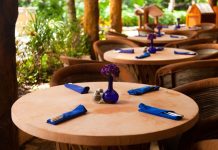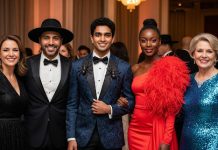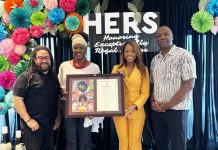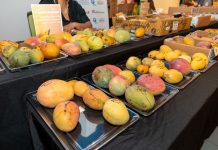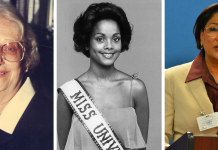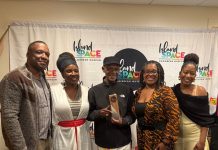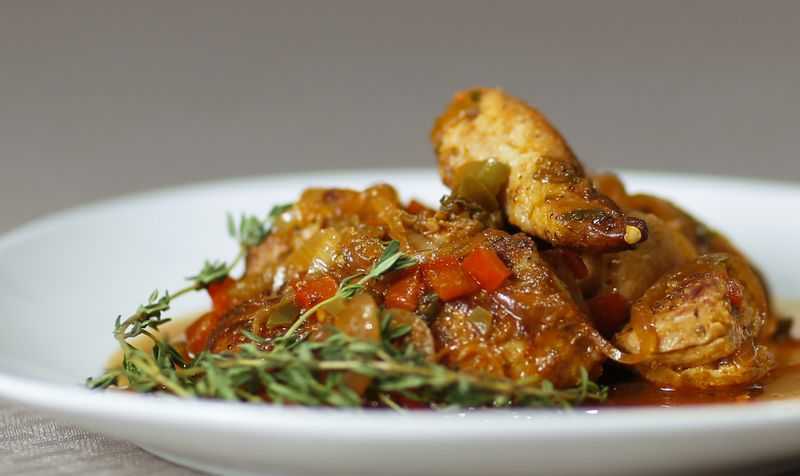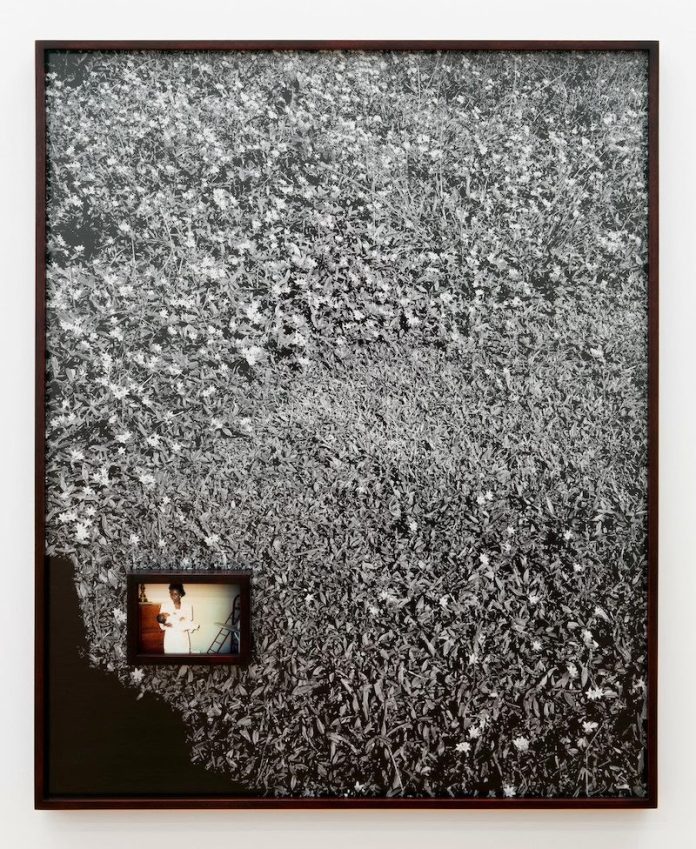
Featuring work by Widline Cadet, Sarah Charlesworth, River Claure, Camila Falquez, Anna Bella Geiger, Njaimeh Njie, Athi-Patra Ruga, and Mary Sibande
(MIAMI, FL — February 6, 2025) — Pérez Art Museum Miami (PAMM) is pleased to present Narratives in Focus: Selections from PAMM’s Collection, an international presentation of photography drawn from the museum’s collection organized by PAMM Curator Jennifer Inacio, now open.
Across a diverse range of artists from the Caribbean, United States, Latin America, and Africa, Narratives in Focus delves into nuanced expressions of individual and collective identities, prompting viewers to critically engage with themes of race, gender, and culture. Through an array of photography-based visual languages—spanning prints, collage, installation, and found images—the works explore memory, migration, and the interplay of tradition and modernity while highlighting resilience, survival, and empowerment.
Together, the artists invite contemplation on the intricate connections between the past and present, the personal and collective, and the local and global, challenging and deepening our understanding of identity in today’s world.
“This exhibition gathers together diverse narratives, each reflecting unique backgrounds, journeys, and perspectives. Photography as a medium is deeply embedded in our everyday lives, and carries profound significance in this context,” says Jennifer Inacio, PAMM Curator. “Photography has long been a powerful tool for capturing and preserving realities—however different they may be. Narratives in Focus allows us to see the world through different lenses and invites viewers to engage with experiences and stories they might not be familiar with. I see this as an essential step in fostering understanding and connection across cultures and identities.”
Andean artist River Claure reflects on his identity through the photographic series Warawar Wawa XII (“Son of the Stars” in Aymara) (2021), drawing on his grandparents’ migration from the Andes to the urban city of Chochamba in the 1970s. In challenging conventional, rigid perceptions of adulthood by embracing play as a means of reconciling feelings with reason, Claure recontextualizes the story of The Little Prince within contemporary Andean culture, inviting viewers to reconsider their own identities and the dynamic, evolving nature of cultural constructs.
Widline Cadet’s layered photographs in her work Sé Sou Ou Mwen Mété Espwa ma #1 (I Put All My Hopes on You #1) (2021) inserts a family snapshot of her mother and sister on a larger, ambiguous landscape, connecting memories of childhood in Haiti with her present self, after migrating to the US. The collage’s title reflects her family’s pursuit of the American Dream while the visual layering examines notions of home, land, and the construction of Black diasporic identity.
This Is Where We Find Ourselves (2021), a multimedia project by Njaimeh Njie, is a visual exploration of family, history, and legacy in Pittsburgh, the artist’s hometown. Responding to the COVID-19 pandemic and systemic racial injustice, the stark black-and-white images of Njie’s home, neighborhood, and surrounding abandoned spaces, combined with poetic handwritten text, offer an examination of displacement, memory, and belonging.
For over 60 years, Brazilian artist Anna Bella Geiger has explored systems and frameworks as varied as the human body, self-representation, mathematical equations, and sociopolitical issues across painting, sculpture, video, installation, and photography. In Brasil nativo—Brasil alienígena (Native Brazil, Alien Brazil, 1976–77), Geiger appropriates postcards depicting the “way of life” of the Indigenous Bororo people with images of herself and her immigrant family in Rio de Janeiro, displaying them side by side. The pairing highlights the challenges of representing Brazil’s diverse population and raises questions about who gets depicted and by whom.
South African artist Athi-Patra Ruga creates fantastical alter egos to navigate and critique sociopolitical issues, blending traditional and contemporary cultures. Central to his work is the Future White Woman of Azania, a persona that examines post-colonial African identity, LGBTQ+ issues, and utopian ideals while challenging societal structures. In A Vigil for Mayibuye (2015), Ruga portrays three of these figures amid lush vegetation in a state of watchful observance, symbolically overseeing migrants on the move within Africa and around the globe—a rumination on displacement, belonging, home, and the hope for reclamation.
In Samantha Siagama, Trans-Indigenous Leader (2023) from her Compañerx series, photographer Camila Falquez portrays the Colombian community leader and activist exiled from the Emberá Indigenous tribe along with a group of fellow transgender women for defending their gender identity. Samantha wears a powerfully voluminous skirt from repurposed curtains, highlighting her beauty, dignity, and resilience in preserving her strength amid adversity.
Part of the Pictures Generation, a loosely affiliated group of New York-based artists in the 1970s and 1980s, Sarah Charlesworth’s Objects of Desire series (1983–88) examines the relationship between ritual and fetishization, whether sacred, secular, or sexual. Figures (1983) is amongst the most renowned works from this series and features a bodiless white cocktail dress floating in a black void on the left panel, while the right panel shows a person in a black sadomasochist rubber suit against an intense red background. In blurring the lines between decadence and refinement, conformity and perversion, economy and excess, and rationality and seduction, Charlesworth confronts the gendered power dynamics in human sexuality.
Mary Sibande’s alter ego Sophie, clad in elaborate Victorian-style dresses, is a conduit through which the South African artist confronts and reinterprets historical and cultural narratives, challenging the viewer to reconsider the legacy of domestic servitude and the broader sociopolitical context of her native country. A Terrible Beauty is Born (2013)—whose title references W. B. Yeats’s poem Easter, 1916—traces Sophie’s evolution into a symbol of resistance, as she transforms into grander, more intricate forms that highlight both her cultural heritage and newfound empowerment.
Narratives in Focus: Selections from PAMM’s Collection is organized by Jennifer Inacio, PAMM Curator. Ongoing support for PAMM’s project galleries from Knight Foundation is gratefully acknowledged.
ABOUT PAMM
Pérez Art Museum Miami (PAMM), led by Director Franklin Sirmans, promotes artistic expression and the exchange of ideas, advancing public knowledge and appreciation of art, architecture, and design, and reflecting the diverse community of its pivotal geographic location at the crossroads of the Americas. The 40-year-old South Florida institution, formerly known as Miami Art Museum (MAM), opened a new building, designed by world-renowned architects Herzog & de Meuron, on December 4, 2013, in Downtown Miami’s Maurice A. Ferré Park.
The facility is a state-of-the-art model for sustainable museum design and progressive programming and features 200,000 square feet of indoor and outdoor program space with flexible galleries; shaded outdoor verandas; a waterfront restaurant and bar; a museum shop; and an education center with a library, media lab, and classroom spaces.







